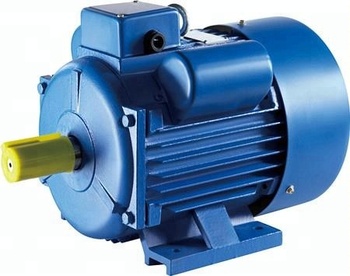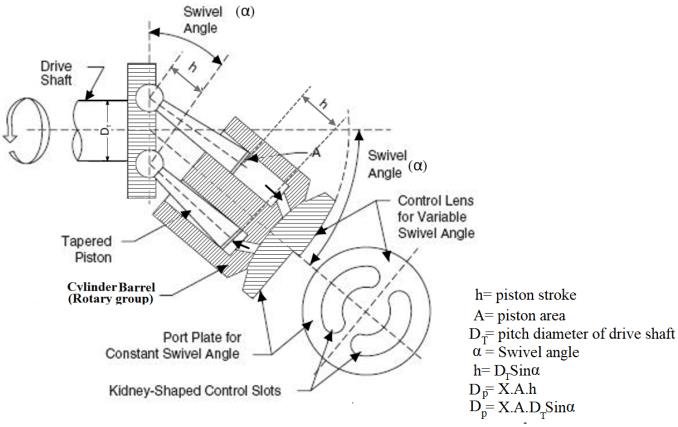Hydraulic pumps can be a huge help in moving large amounts of fluid and debris, but they can also be difficult to operate using just an electric motor. In this article, we’ll explain the basics of how hydraulic pumps work and show you how to run one using an electric motor.
Before we get started, it’s important to understand just what a hydraulic pump is and how it works. A hydraulic pump is basically a machine that uses pressurized fluid to push or pull objects. The most common type of hydraulic pump is the piston pump, which uses pistons to move the fluid.
To use an electric motor to power a hydraulic pump, you first need to connect the motor to the pump. You can do this by using a belt or chain system, or by using a shaft coupling. Next, you’ll need to install a pressure switch in the electrical circuit so that the electric motor will only run when the pressure in the hydraulic system is high enough.
Now that you have everything set up, you can start moving fluids using your electric motor!
What is a hydraulic pump?
A hydraulic pump is a machine that uses the power of hydraulics to move things around. The most common use for a hydraulic pump is to move fluid substances, such as oil or water. A hydraulic pump can also be used to generate power.
A hydraulic pump is made up of several parts. The main part is the motor, which uses electricity or another type of power to turn the gears that make the pump work. The fluid that the pump is moving goes into a reservoir at the bottom of the machine. This reservoir is filled with fluid that has been pressurized by the motor. When you press a button on the machine, the pressure in the reservoir is released and flows through the pipe that leads to the object you are trying to move.

How does it work?
Hydraulic pumps are typically powered by a gasoline or diesel engine, but there are also electric versions. How do they work? According to HowStuffWorks, an electric motor turns a shaft that’s connected to the pump’s hydraulic pistons. These pistons push hydraulic fluid through the pump’s nozzle, which then moves the object you’re trying to lift.
The downside to hydraulic pumps is that they can be relatively expensive and they require a significant amount of power to work. They’re also not as efficient as other types of pumps, so they can take longer to move an object.
What are the components of a hydraulic pump?
A hydraulic pump is a machine that uses pressurized fluid to move objects. A hydraulic motor is used to power the pump. The pump consists of several components, including a cylinder, a piston, and a gearbox.
The cylinder is the part of the pump that contains the pressurized fluid. The piston is the object that moves inside the cylinder, and the gearbox helps to transfer power from the motor to the piston.
What do you need to make a hydraulic pump work with an electric motor?
To run a hydraulic pump with an electric motor, you will need:
-An electric motor
-A hydraulic pump
-A power supply (such as an outlet from a car battery)
-A hose or other connection between the electric motor and the hydraulic pump
What are the pros and cons of using an electric motor with a hydraulic pump?
Electric motors can provide greater torque and longer life than traditional hydraulic pumps, but they also require more current than a regular electric outlet can provide. Hydraulic fluid is also corrosive and can damage electrical systems. The trade-off is that electric motors are typically cheaper to operate than hydraulic pumps.
The pros of using an electric motor with a hydraulic pump include greater torque and longer life. The cons are that the current required can be a limitation, and hydraulic fluid can be corrosive and damage electrical systems.

Tips for Making Your Hydraulic Pump Work with an Electric Motor Conclusion
There are a few things to keep in mind when using an electric motor to power a hydraulic pump. First, make sure the electric motor is designed for use with hydraulic systems. Second, make sure the pump and motor are properly matched. Third, be sure to install adequate protection against overloads and surges. Finally, be aware of the potential for hydrodynamic torque (also called rotational torque) when using an electric motor on a hydraulic system.
Overall, using an electric motor to power a hydraulic pump is a relatively easy way to boost efficiency and speed up tasks. However, be sure to follow the proper guidelines and precautions to avoid potential problems.
Can using an electric motor with a hydraulic pump save energy over using separate devices?
Can using an electric motor with a hydraulic pump save energy over using separate devices? That is the question being asked by many people as they become increasingly aware of the environmental benefits of using electricity in their everyday lives. In fact, some believe that using an electric motor with a hydraulic pump can actually be more environmentally friendly than using two separate devices.
Here are some reasons why using an electric motor with a hydraulic pump can be more efficient:
-Electricity is already being used to power the pump, so there is no need for additional batteries or power cords.
-The motor uses less energy than a traditional hydraulic pump, so there is less waste produced.
-The motor can work at lower speeds, which means it will use less fuel and generate less noise.
So if you’re looking to reduce your carbon footprint while working on your projects, consider using an electric motor with a hydraulic pump. It could make a big difference!
Conclusion
Yes, you can run a hydraulic pump with an electric motor. In fact, this is a common configuration for many industrial applications where high power and low weight are important factors. The electric motor provides the necessary torque to spin the pump wheel quickly and efficiently, while the hydraulic system ensures that the fluid moving through the pump is pressurized and directed where it needs to go.63
Can you run a hydraulic pump with an electric motor,please click topkitparts see more
